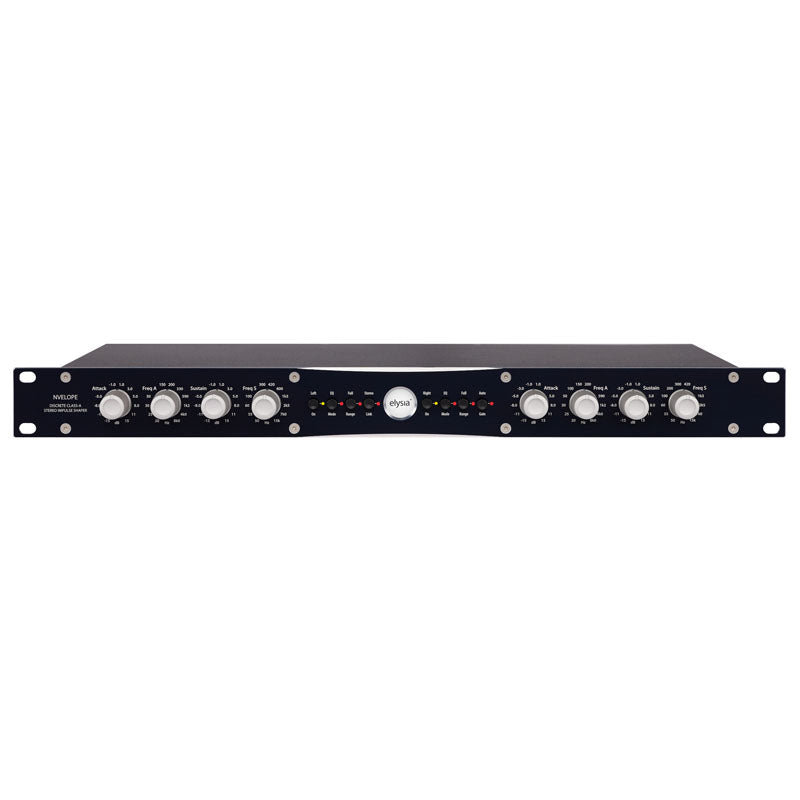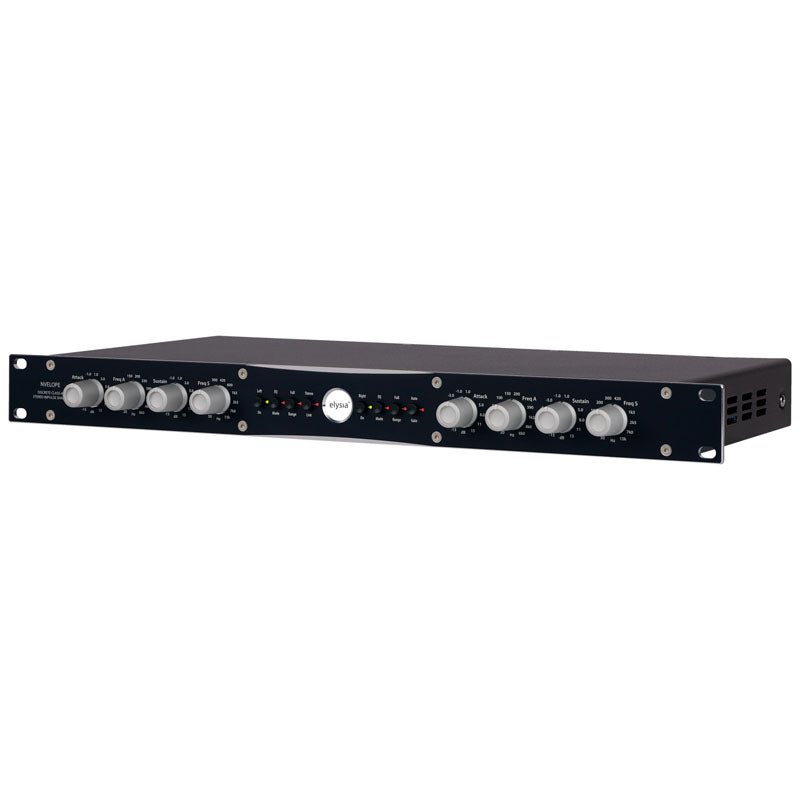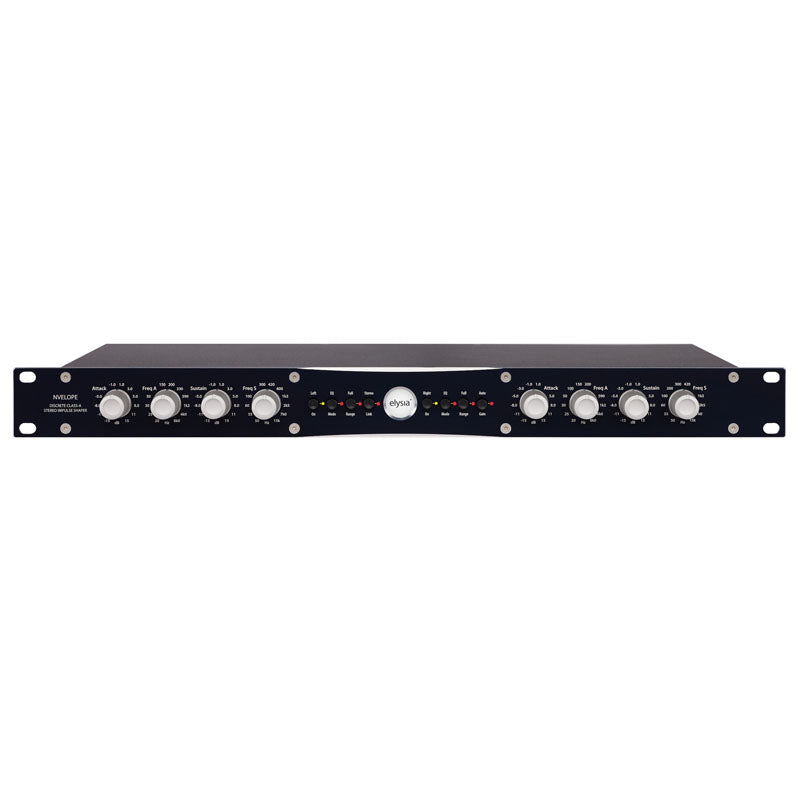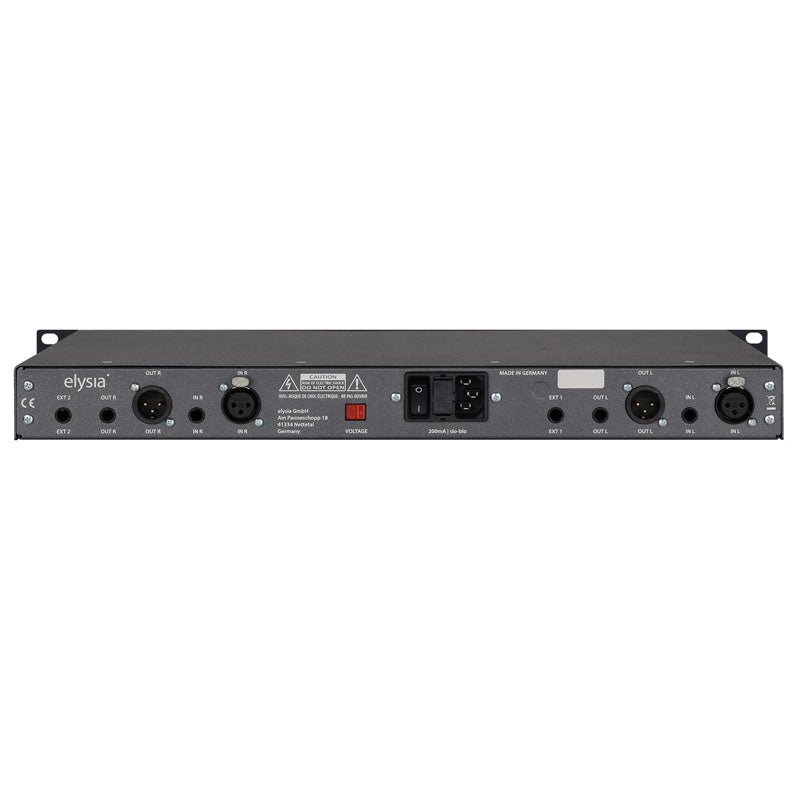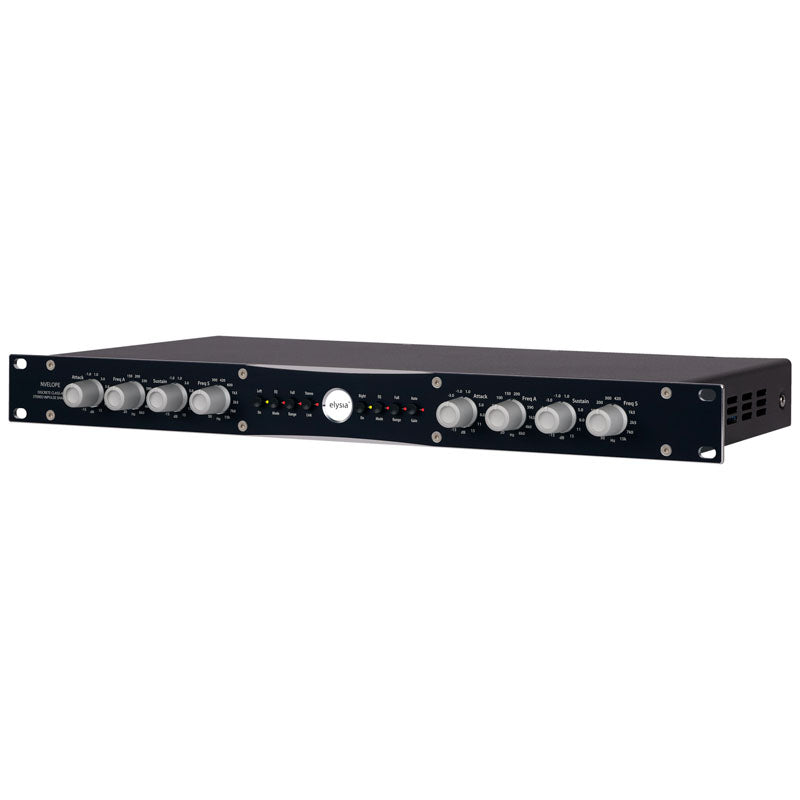Description
elysia nvelope Equalizer Dynamics (Rackmount)
nvelope. transient. vibrant. shaping.
- Class-A Stereo Impulse Shaper for recoding, mixing and mastering
- Developed by the father of the original SPL Transient Designer
- Full Range Mode (Classic Mode)
- Superb sounding Shelf Equalizer mode
- Dual Band mode
- Best sounding Transient Designer on the market
- Perfect for the drum room or overheads
- Can be used as dual mono or true stereo link
- Smooth and natural sound for all acoustic instruments
nvelope is a powerful audio processor capable of making subtle or drastic changes to a sound by providing control over its attack and sustain characteristics. This is extremely useful for reshaping all sorts of individual tones, and is a wonderful tool in any mixing situation as well. Big drums? You name it!
Especially when it comes to percussive material, the nvelope can be used for single tracks or the master bus with great benefit. You can form a signal and enhance its cut in the mix without deforming it too much as you would by using excessive EQ and compression.
Every single of its many aspects - sound, features, circuitry, components, design, materials, manufacturing - has been thought over and over until there was just nothing left to improve. Basically, every single part of our fine products is custom, and most of these are made according to our own designs and specs.
Only the best components the market has to offer are good enough for the nvelope, and it shows. Each of our product is manually built to order and tested by ourselves, here at our headquarters in Germany.
Our product benefits sum up in an audio quality that is beyond all doubt. Even when extreme settings are used, the sound always stays clean and powerful.
Full Range Mode. nvelope operates independently of the specific level of a signal, and you do not have to spend a lot of time trying to balance a set of complex controls to quickly get the results you seek.
Full Range mode is especially fast and easy to use, as all you need to do is dial in more or less attack and sustain by turning their specific controllers to the left (reduction) or to the right (increase). Similar to a compressor and unlike in Dual Band mode, you can use the Freq A controller to reduce the influence of low frequencies on the attack processing (higher frequency = less bass influence).
Dual Band Mode. The attack and sustain parameters become much more flexible by selectively processing a certain frequency range chosen by the user.
The Freq A controller now sets the start frequency for attack processing, while the Freq S controller determines the end frequency for sustain processing. The function of the Attack and Sustain controllers remains the same as in Full Range mode. So it is pretty likely you'll find yourself using the Dual Band mode in any situation where you would like to adapt the way the nvelope processes more individually and on material which tends to produce unwanted artifacts in Full Range mode.
EQ Mode. A very nice side effect of the topology of nvelope is that it can also be used as a shelving filter. This is achieved by temporarily deactivating its dynamics sections while keeping the filter stages active. Freq A now sets the frequency of the high shelf filter, while Attack determines the amount of cut (turn left) or boost (turn right) in this band. Similarly, Freq S sets the frequency of the low shelf filter and Sustain determines the amount of cut or boost. The two channels be used as two separate equalizers at the same time, or be linked together for processing stereo material as well.
Mixed Mode. nvelope has two channels of Full Range or Dual Band impulse shaper or shelving EQ, which can be operated stereo linked or dual mono. But, the two separate channels can also be used for different tasks at the same time. For example, you can shape one signal in Dual Band mode in channel L and a completely different signal in Full Range mode in channel R. Or, you can connect the output of channel L to the input of channel R, and then process the frequency response of one single signal with the EQ first, followed by some nice Dual Band impulse shaping. There are lots of possible combinations.
Auto Gain. Boosting the attack in Full Range mode can sometimes result in some pretty huge level peaks. These can make your processed signal sound uneven, and in the worst case they will create the nasty kind of distortion you don't want. nvelope solves this with the Auto Gain function. This simple button makes the impulse shaper automatically compensate stronger level peaks, so this can be the solution for many level-related issues caused by the attack processing. Auto Gain is typically not needed in Dual Band or EQ operation and therefore not offered in this mode.
Dual Mono or Stereo Link. The header says it all, but you might want to have a look at the possible channel combinations resulting from this. Ultimate flexibility!
SPECIFICATIONS
- Frequency response: <10 Hz - 400 kHz (-3,0 dB)
- THD+N @ 0 dBu, 20 Hz - 22 kHz: 0,006 %
- THD+N @ +10 dBu, 20 Hz - 22 kHz: 0,01 %
- Noise floor - Full Range & EQ Mode: -90 dBu
- Noise floor - Dual Band Mode: -87 dBu
- Dynamic range, 20 Hz - 22 kHz: 112 dB
- Level: Input: +21 dBu || Output: +21 dBu
- Impedance: Input: 10 kOhm || Output: 68 Ohm
- Power consumption: 12 Watts
- Dimensions (W x H x D, incl. Knobs): 19” x 1.75“ x 9.4“
- Weight: 3,88 lbs / 1,76 kg
